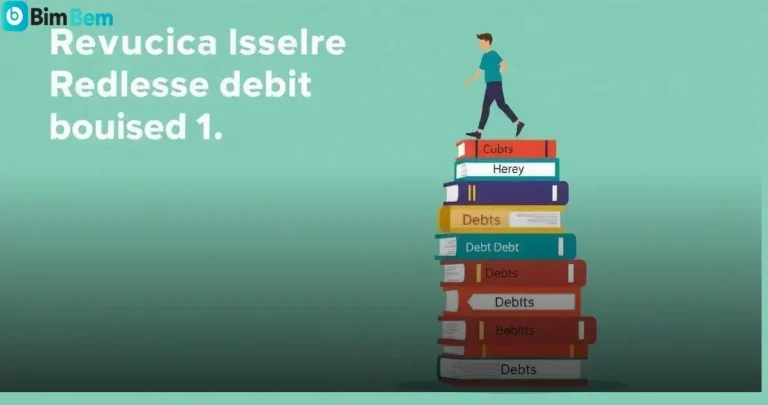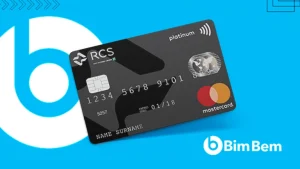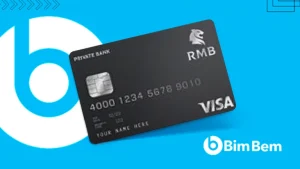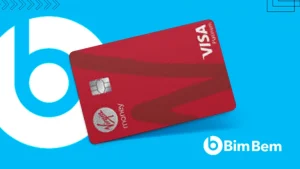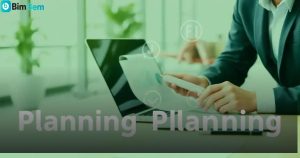Anúncio
Reducing debt effectively involves understanding your financial situation, creating a debt reduction plan, and utilising budgeting techniques.
It can be enhanced by negotiating with creditors and exploring consolidation options while staying motivated throughout your journey.
Anúncio
This comprehensive approach leads to financial freedom.
How to reduce debt is a common challenge faced by many individuals and families today.
Anúncio
With rising living costs, it’s more important than ever to find effective strategies for managing and eliminating debt.
Every year, countless people struggle with credit card bills, student loans, and other financial obligations.
Understanding Debt: Types and Causes
Debt can often feel overwhelming, but it helps to understand its different types and the causes behind it.
By gaining insight into these aspects, you can make informed decisions about how to tackle your financial issues.
Types of Debt
There are several types of debt, and knowing what they are can help you manage them more effectively:
- Secured Debt: This type of debt is backed by collateral, such as a house or car. If the borrower fails to make payments, the lender can seize the asset.
- Unsecured Debt: Unsecured debt is not tied to any specific asset. Examples include credit card debt and medical bills. These debts can be more difficult to manage because there’s no collateral to offer the lender.
- Revolving Debt: This type of debt allows the borrower to use credit repeatedly up to a defined limit, such as credit cards or lines of credit.
- Installment Debt: Installment loans are borrowed sums paid back in fixed amounts over a predetermined period, like personal loans or mortgages.
Common Causes of Debt
Understanding the causes of debt is crucial for prevention:
- Unexpected Expenses: Sudden financial emergencies, like medical bills or car repairs, can lead to debt accumulation.
- Poor Financial Management: Lacking a budget or not tracking spending can contribute to falling into debt.
- Low Income: Insufficient income to meet living costs can force individuals to rely on credit cards and loans.
- Overuse of Credit: Frequently using credit cards for everyday purchases without paying them off can lead to high balances and significant debt.
Recognising these types and causes of debt can empower you to avoid common pitfalls and take actionable steps towards reducing debt.
Assessing Your Financial Situation
Assessing your financial situation is a crucial step on the path to reducing debt.
To gain a clear understanding of where you stand financially, it’s important to review all aspects of your finances.
Gather Your Financial Information
Start by collecting all financial statements in one place. This includes:
- Bank Statements: Review your monthly bank statements to understand your income and expenses.
- Credit Card Statements: Look at your credit card balances and payment history to identify how much you owe and your spending habits.
- Loan Documents: Gather all documents related to any personal loans, student loans, or mortgages you may have. Note the balance, interest rates, and payment terms.
Create a Monthly Budget
Developing a budget helps you track your income and expenses. Use the following steps:
- List Your Income: Write down all sources of income, including salaries, bonuses, and side hustles.
- Identify Fixed and Variable Expenses: Differentiate between fixed costs (like rent) and variable costs (like groceries) to see where you can cut back.
- Set Spending Limits: Assign limits to each category to avoid overspending, enabling you to allocate more funds toward debt reduction.
Calculate Your Total Debt
Next, it’s essential to determine how much debt you actually owe:
- Add Up All Balances: Create a list of all your debts, including amounts owed, interest rates, and lenders.
- Understand the Impact of Interest: Determine how much interest you’re paying on each debt and how it affects your overall financial situation.
Analyse Your Assets
Understanding your assets can provide insight into your overall net worth:
- List Your Assets: Include savings accounts, investments, properties, and vehicles.
- Evaluate Their Worth: Assess the market value of your assets, taking into account any liabilities associated with them.
By thoroughly assessing your financial situation, you can make informed decisions about how to effectively reduce debt and progress toward financial freedom.
Creating a Debt Reduction Plan
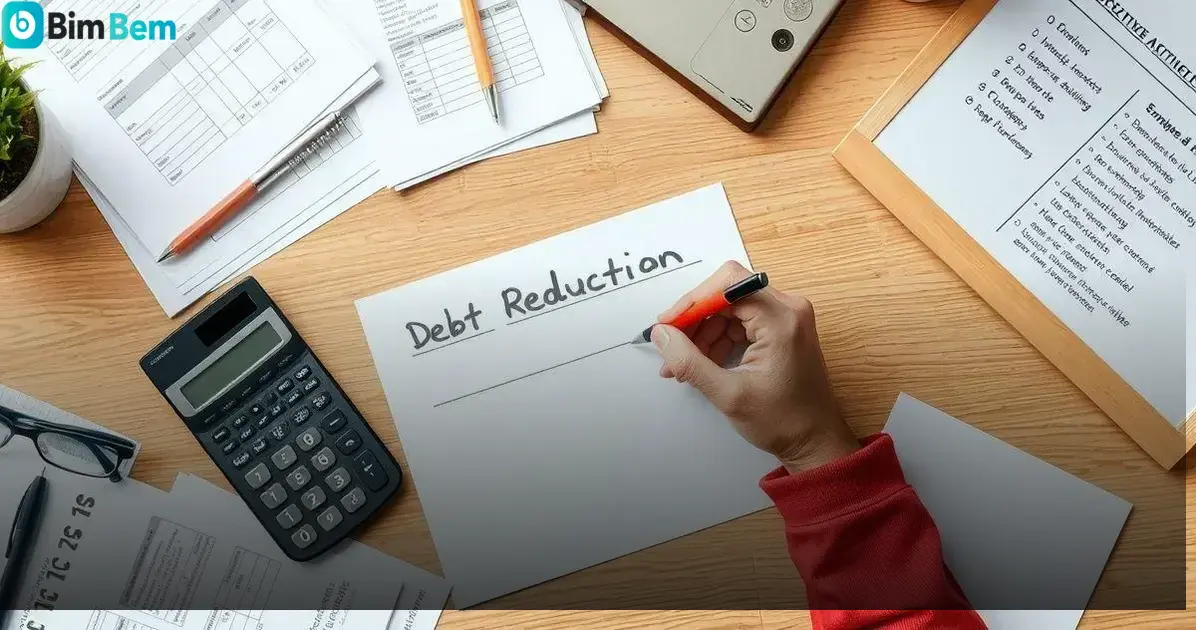
Creating a debt reduction plan is a vital step towards financial freedom.
This plan should be realistic, flexible, and tailored to your unique situation.
Set Clear Goals
Begin by defining clear and achievable goals for reducing your debt. Consider the following:
- Specific Amount: Decide how much debt you want to pay off within a certain timeframe.
- Prioritisation: Identify which debts are most urgent or have the highest interest rates.
- Time Frame: Set a reasonable deadline to motivate yourself and keep track of your progress.
Choose Your Debt Reduction Strategy
Select a strategy that aligns with your goals. Common methods include:
- The Avalanche Method: Focus on paying off debts with the highest interest rates first, while making minimum payments on others.
- The Snowball Method: Start by paying off the smallest debts first to build momentum and motivation.
- Debt Consolidation: Combine multiple debts into one loan with a lower interest rate for easier management.
Develop a Monthly Payment Plan
Create a detailed plan for your monthly payments:
- Budget Allocation: Adjust your budget to free up money for debt payments. Look for areas where you can cut back.
- Auto-Payments: Set up automatic payments to ensure you never miss a due date, avoiding late fees.
Monitor Your Progress
Track your progress regularly to stay motivated:
- Review Your Plan: Check your debt reduction plan every month to see how much you’ve paid off.
- Celebrate Small Wins: Acknowledge small achievements by treating yourself to something small when you reach a milestone.
Seek Professional Help if Needed
If you feel overwhelmed, consider seeking help:
- Credit Counselling: A credit counsellor can provide personalised advice and support for managing your debt.
- Financial Advisors: They can help you with long-term financial planning and strategies tailored to your situation.
By following these steps, you can create a comprehensive debt reduction plan that fits your needs and leads you to financial freedom.
Effective Budgeting Techniques
Implementing effective budgeting techniques is essential for managing your finances and reducing debt.
A well-structured budget can keep you on track and promote healthy financial habits.
Track Your Income and Expenses
The first step in budgeting is to accurately track your income and expenses:
- Document Your Income: List all sources of income, such as salary, bonuses, and side jobs. Ensure you have a clear view of your total monthly income.
- List All Expenses: Write down all fixed and variable expenses. This includes rent, utilities, groceries, and entertainment.
Use the 50/30/20 Rule
A popular budgeting method is the 50/30/20 rule, which divides your income into three categories:
- 50% Needs: Allocate half of your income to essential needs, such as housing, food, and healthcare.
- 30% Wants: Use 30% of your income for discretionary spending, like dining out and hobbies.
- 20% Savings and Debt Repayment: Direct the remaining 20% towards savings and paying off debt.
Establish a Spending Plan
Creating a spending plan ensures that you adhere to your budget:
- Set Spending Limits: Decide how much you can spend in different categories and stick to those limits.
- Prioritise Necessary Expenses: Focus on covering your needs before allocating funds for wants and entertainment.
Review and Adjust Your Budget Regularly
It is important to review your budget frequently:
- Monthly Review: At the end of each month, check your budget to see how well you adhered to it and where adjustments may be needed.
- Make Adjustments: If you find certain categories are consistently overspent, consider revising your limits or making lifestyle changes.
Utilise Budgeting Tools
Make use of various tools and apps to simplify budgeting:
- Budgeting Apps: Apps like Mint or YNAB can help you track your finances and manage your budget effectively.
- Spreadsheets: Utilize spreadsheet software to create customized budgeting templates that match your financial goals.
By applying these effective budgeting techniques, you can take control of your financial situation and work towards reducing debt more efficiently.
Negotiating with Creditors
Negotiating with creditors can be an effective way to reduce your debt burden.
It is an opportunity to communicate and find common ground, potentially leading to more manageable payment arrangements.
Prepare for the Conversation
Before contacting your creditors, gather all necessary information:
- Know Your Debt: Understand how much you owe, including interest rates and payment terms.
- Assess Your Finances: Be aware of your current financial situation, including your income and expenses, to present a realistic proposal.
- Set Clear Objectives: Decide what you want to achieve through the negotiation, such as a lower interest rate or a payment plan extension.
Contact Your Creditors
When you’re ready to negotiate, reach out to your creditors:
- Choose the Right Time: Timing can be crucial. Contact them when they are likely to be less busy to ensure you have their full attention.
- Be Professional: Approach the conversation politely and professionally. Explain your financial situation honestly without being overly emotional.
Propose a Solution
During your negotiation, propose a solution that works for both parties:
- Offer a Payment Plan: Suggest a more manageable monthly payment that suits your current financial situation.
- Request Lower Interest Rates: Ask if they can lower your interest rate, making it easier to pay off your debt.
- Consider Settling the Debt: If you can afford a lump-sum payment, consider offering that in exchange for a reduction in the total debt owed.
Get Everything in Writing
If your creditor agrees to your terms, ensure you receive everything in writing:
- Document the Agreement: Having a written record of your agreement protects you and ensures both parties abide by the new terms.
Follow Up
After your negotiation, it’s important to follow up:
- Check Your Statements: Monitor your account statements to confirm that new terms are reflected in your account.
- Maintain Communication: If you encounter difficulties, don’t hesitate to reach out to your creditor again to discuss options.
Negotiating with creditors can lead to more manageable payments and help you reduce your debt.
Use these tips to advocate for yourself and achieve a better financial situation.
Exploring Debt Consolidation Options
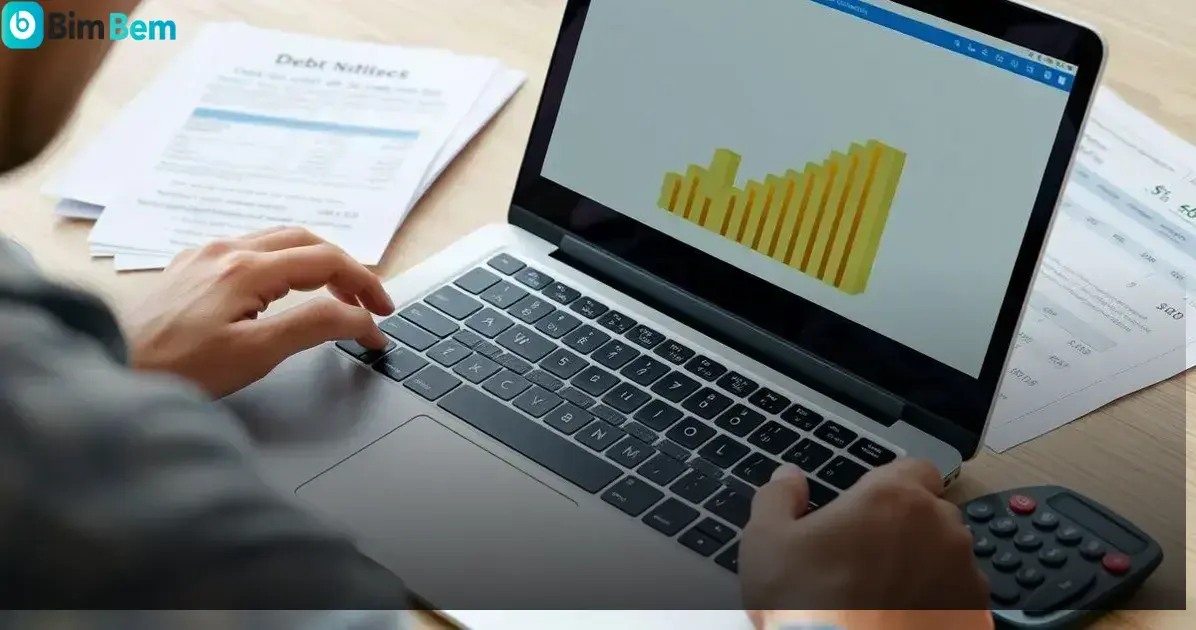
Exploring debt consolidation options can be a practical step towards managing your debts more efficiently.
This strategy is often recommended when considering how to reduce debt, as it involves combining multiple debts into a single loan or payment, usually at a lower interest rate.
What is Debt Consolidation?
Debt consolidation is the process of taking out a new loan to pay off existing debts. This can simplify your financial situation by:
- Reducing Monthly Payments: A consolidation loan might have a lower interest rate or longer repayment term, lowering your monthly payments.
- Streamlining Payments: Instead of tracking multiple payments, you only have one loan to manage.
Types of Debt Consolidation Options
Several options are available for consolidating your debt:
- Personal Loans: You can take out a personal loan from a bank or credit union to pay off your debts. These loans typically have fixed rates and terms.
- Balance Transfer Credit Cards: Some credit cards offer low or 0% introductory interest rates for balance transfers, enabling you to move your high-interest debt onto one card.
- Home Equity Loans or Lines of Credit: If you own a home, you might consider borrowing against your equity. However, this involves the risk of losing your home if you cannot make payments.
- Debt Management Plans: Work with a credit counselling agency to create a plan that negotiates lower interest rates with your creditors.
Pros and Cons of Debt Consolidation
It’s important to evaluate the benefits and risks:
- Pros:
- Simplified payments make budgeting easier.
- You may save money on interest rates.
- Improved credit score if payments are made on time.
- Cons:
- Potential fees for obtaining a loan or transferring balances.
- If not managed properly, you may fall deeper into debt.
- Risk of losing collateral, such as your home with home equity loans.
How to Choose the Right Option
When considering debt consolidation, keep these tips in mind:
- Assess Your Situation: Evaluate your total debt, monthly income, and expenses to determine the best option for you.
- Research Lenders: Compare interest rates, fees, and terms from multiple lenders to find the best deal.
- Read the Fine Print: Pay attention to terms and conditions, including any hidden fees or penalties.
By exploring the right debt consolidation options, you can regain control of your finances and work towards a debt-free future.
Staying Motivated on Your Debt-Free Journey
Staying motivated on your debt-free journey is essential for achieving your financial goals.
It can be challenging, but having a clear plan and positive mindset is key when learning how to reduce debt effectively.
Set Achievable Milestones
Breaking down your debt reduction plan into smaller, manageable goals helps you stay focused:
- Short-term Goals: Set goals that can be achieved within a few months, like paying off a small debt or saving a certain amount.
- Long-term Goals: Visualise larger objectives, such as being debt-free within a specific timeframe.
Track Your Progress
Keeping track of your achievements can boost your motivation:
- Use a Debt Tracker: Consider using a spreadsheet or a debt tracking app to monitor your repayments and celebrate each milestone.
- Visual Reminders: Create charts or graphs that display your progress toward becoming debt-free.
Stay Inspired
Finding sources of inspiration can keep you motivated:
- Follow Personal Finance Blogs: Read success stories from others who have overcome debt to encourage and motivate yourself.
- Join Support Groups: Engage with community support groups, whether in-person or online, to share experiences and tips.
Reward Yourself
Incentivising your progress can make the journey enjoyable:
- Set Up Rewards: Establish rewards for when you complete milestones. This could be a small treat, a day out, or something you’ve wanted for a while.
Maintain a Positive Mindset
Adopting a positive attitude can significantly affect your motivation:
- Practice Gratitude: Focus on what you have achieved and be thankful for the progress you’ve made rather than dwelling on setbacks.
- Affirmations: Use positive affirmations to remind yourself of your goals and capabilities regularly.
Staying motivated requires determination and a strong support system.
By setting realistic goals, tracking your progress, and rewarding yourself along the way, you can successfully navigate your debt-free journey.
FAQ – Frequently Asked Questions about Reducing Debt
What is debt consolidation?
Debt consolidation is the process of combining multiple debts into a single loan, usually at a lower interest rate, making it easier to manage.
How can I stay motivated while reducing my debt?
Staying motivated can be achieved by setting achievable goals, tracking your progress, rewarding yourself for milestones, and maintaining a positive mindset.
What are some effective budgeting techniques?
Effective budgeting techniques include tracking your income and expenses, using the 50/30/20 rule, establishing a spending plan, and regularly reviewing and adjusting your budget.
How do I negotiate with creditors?
To negotiate with creditors, prepare your financial information, contact them professionally, propose a solution such as a lower interest rate or payment plan, and get everything in writing.
What are the benefits of using a debt management plan?
A debt management plan can help you lower interest rates, consolidate payments, and provide committed support from credit counselling agencies to pay off your debt more efficiently.
How can I assess my financial situation effectively?
Assess your financial situation by gathering all financial statements, creating a monthly budget, calculating total debt, and analysing your assets.

